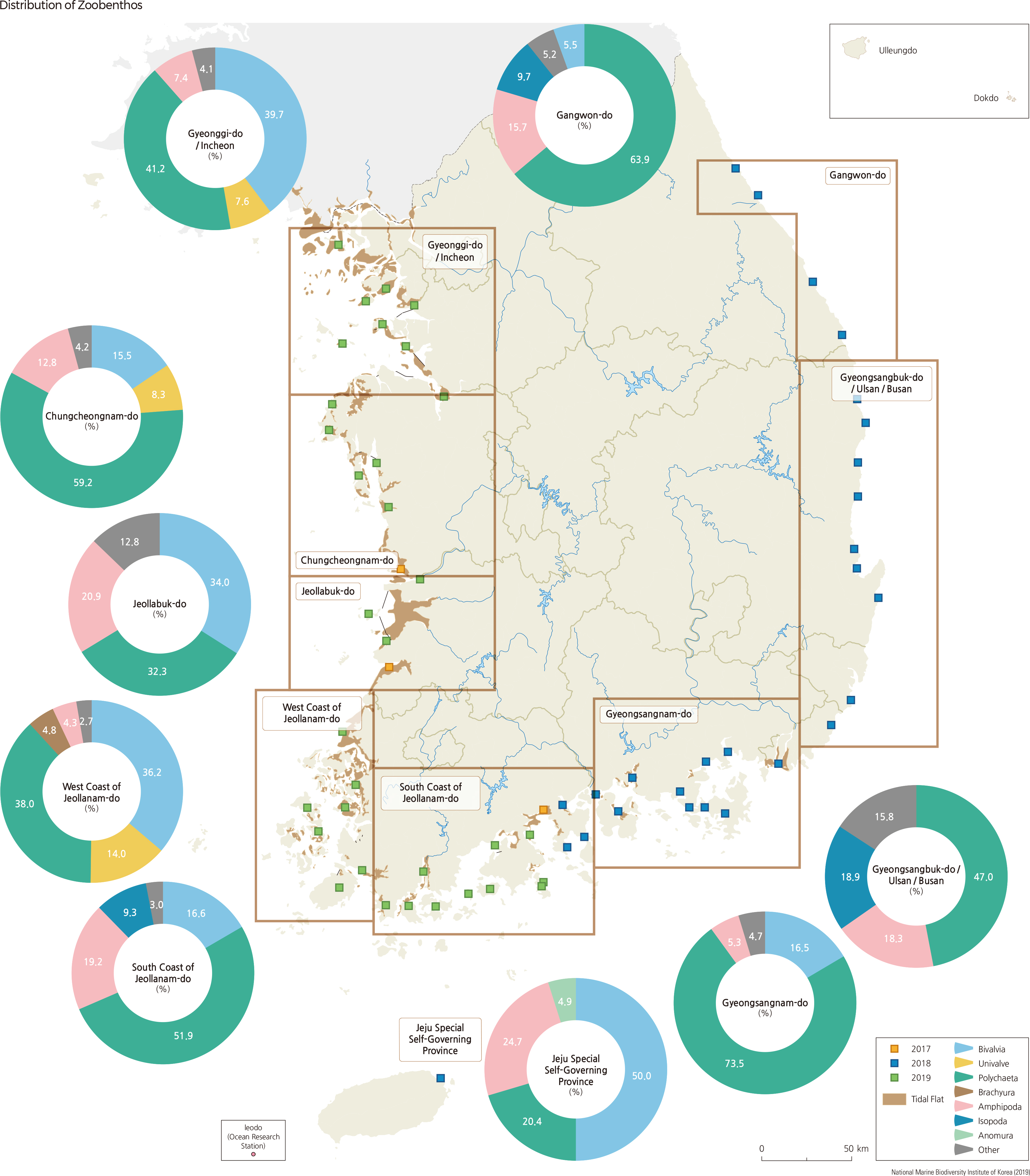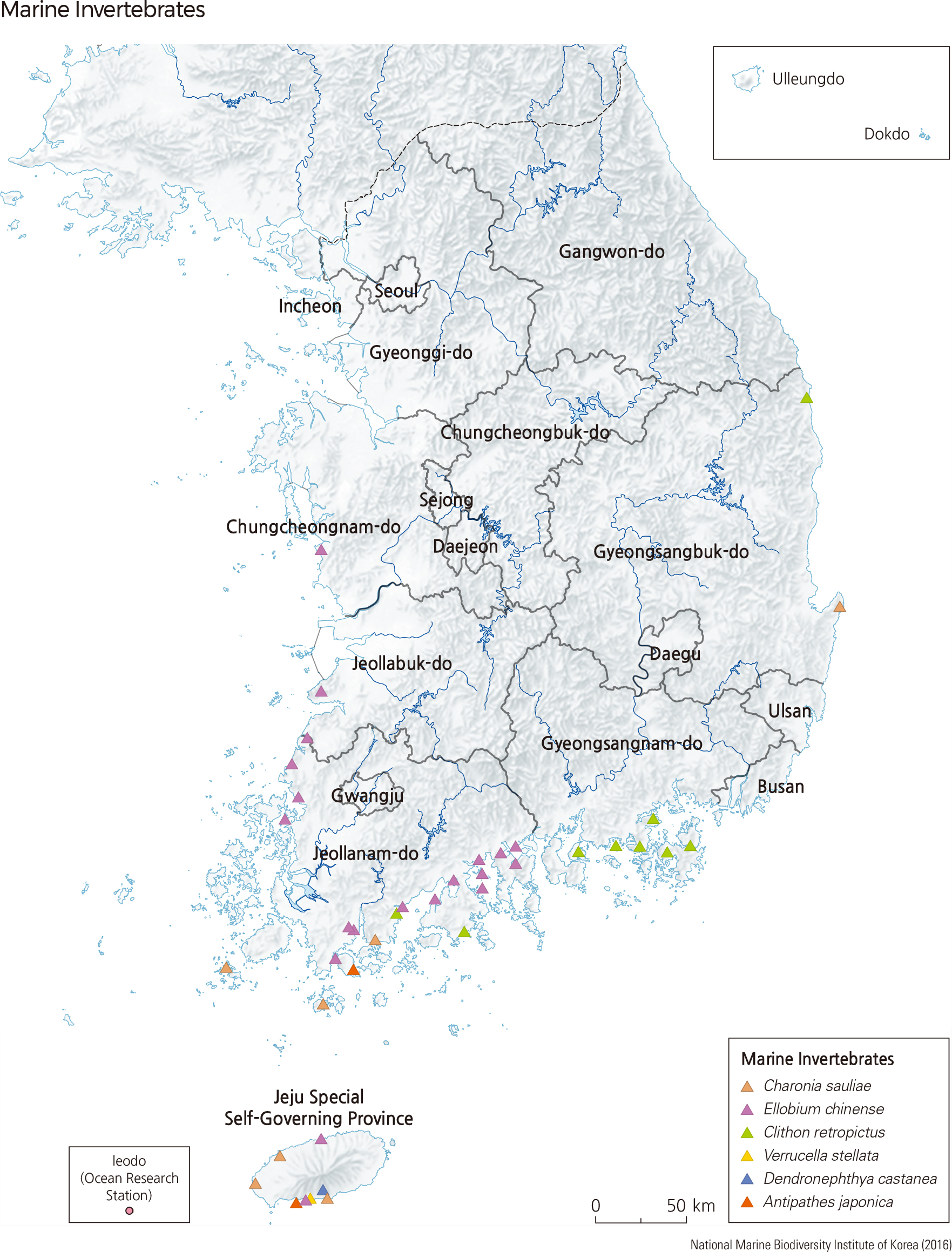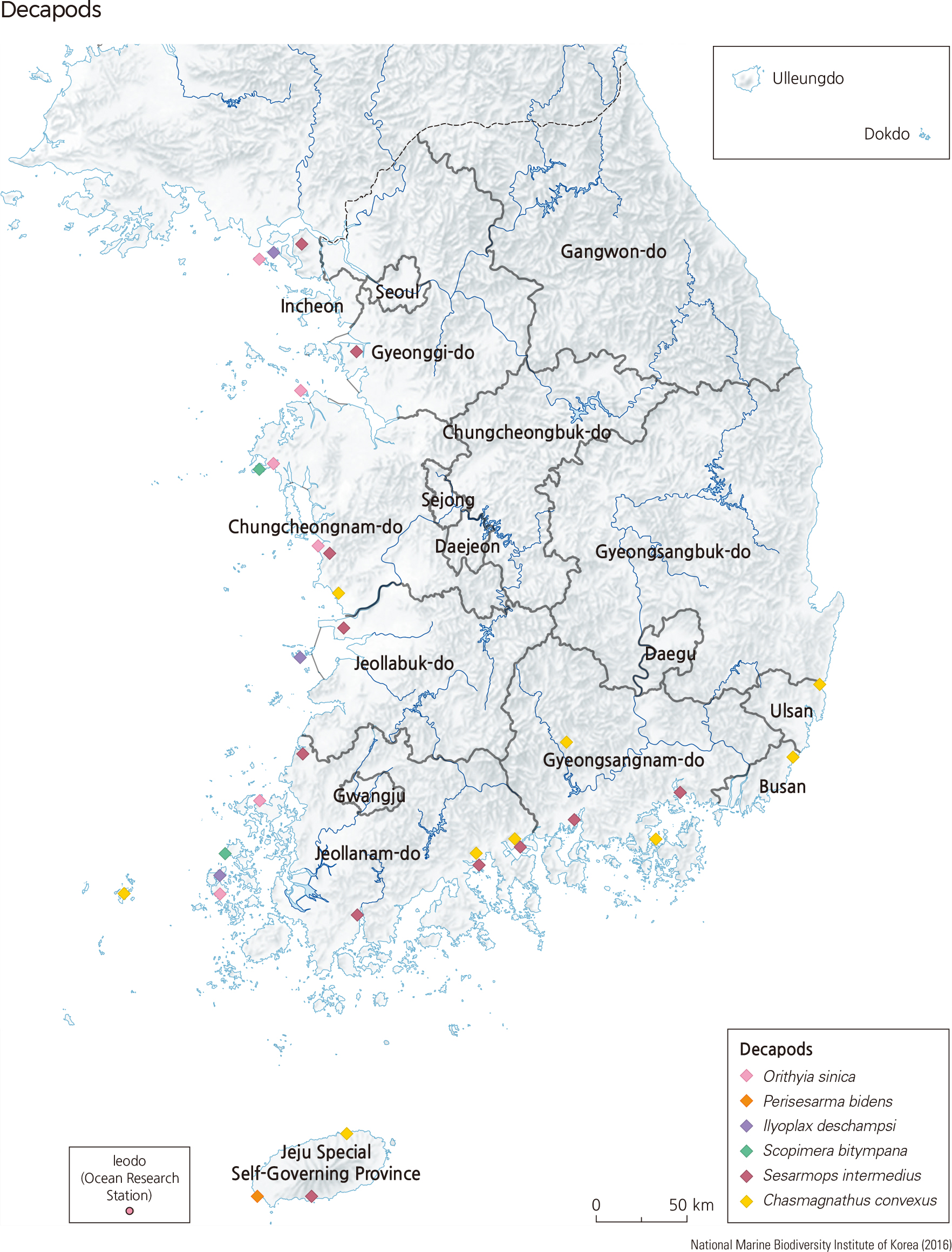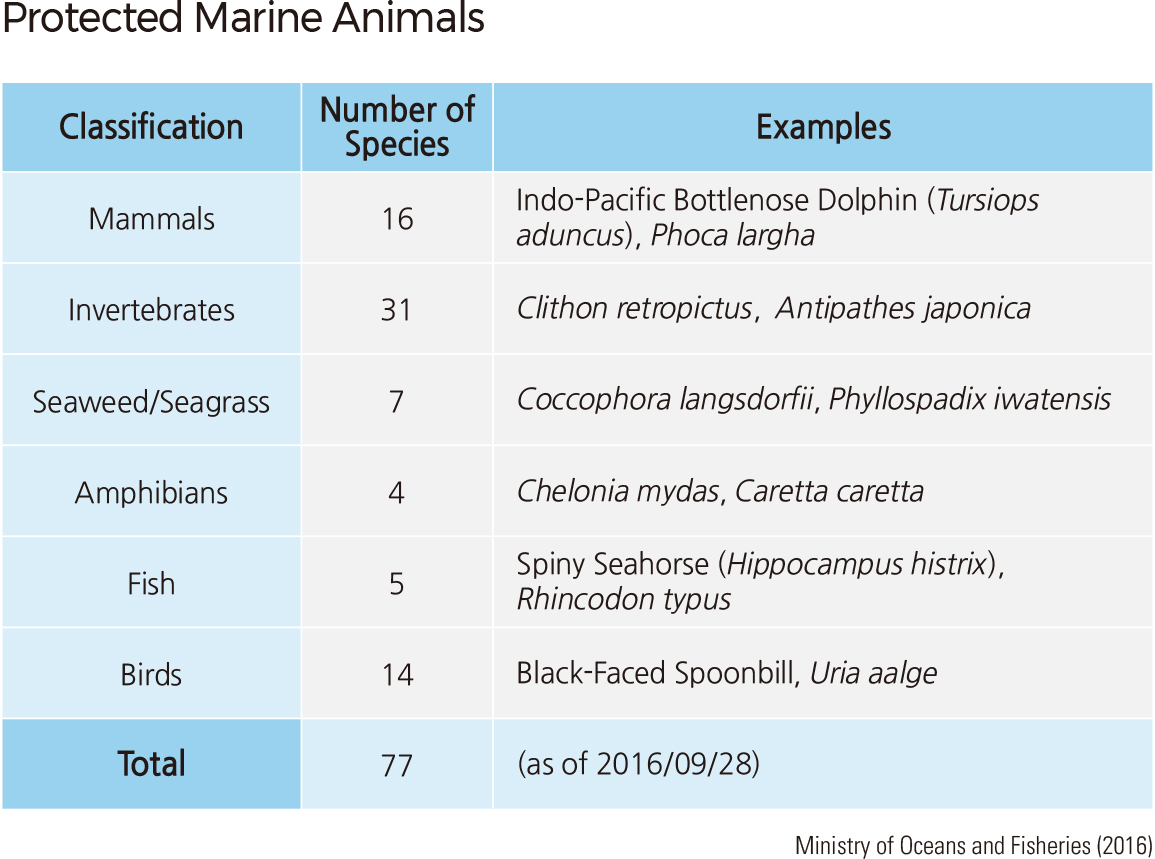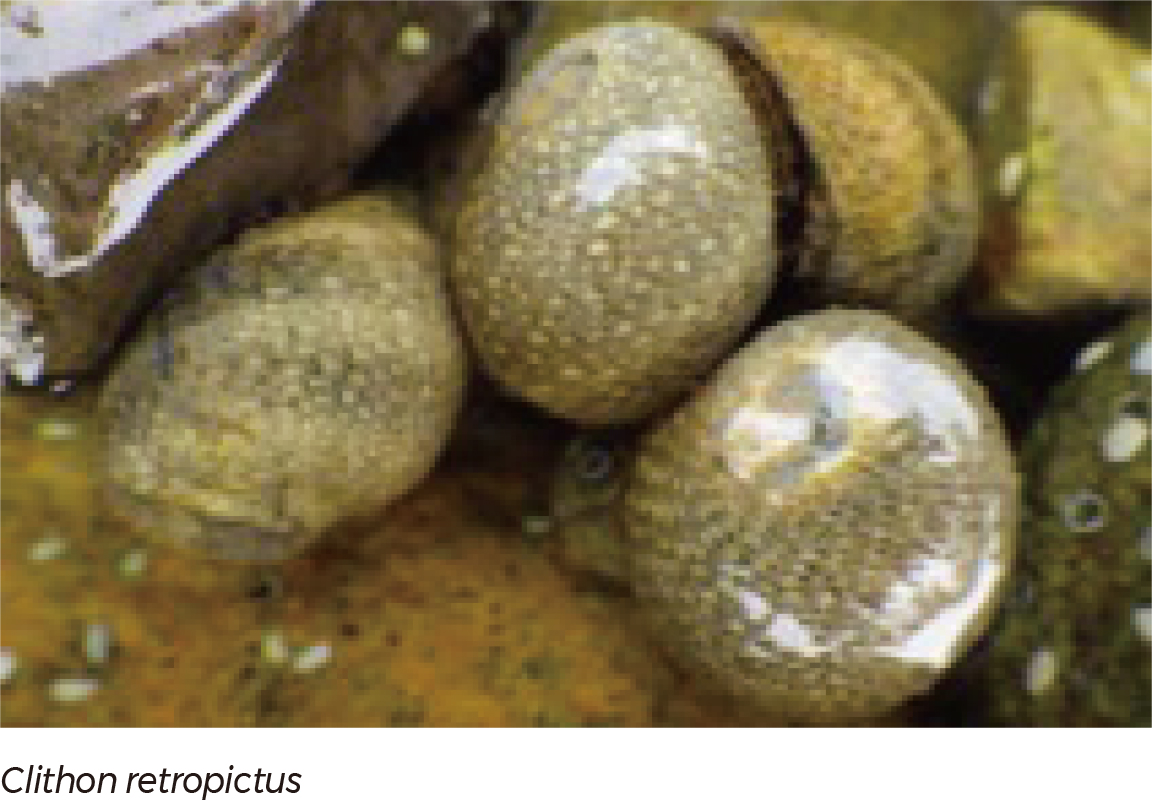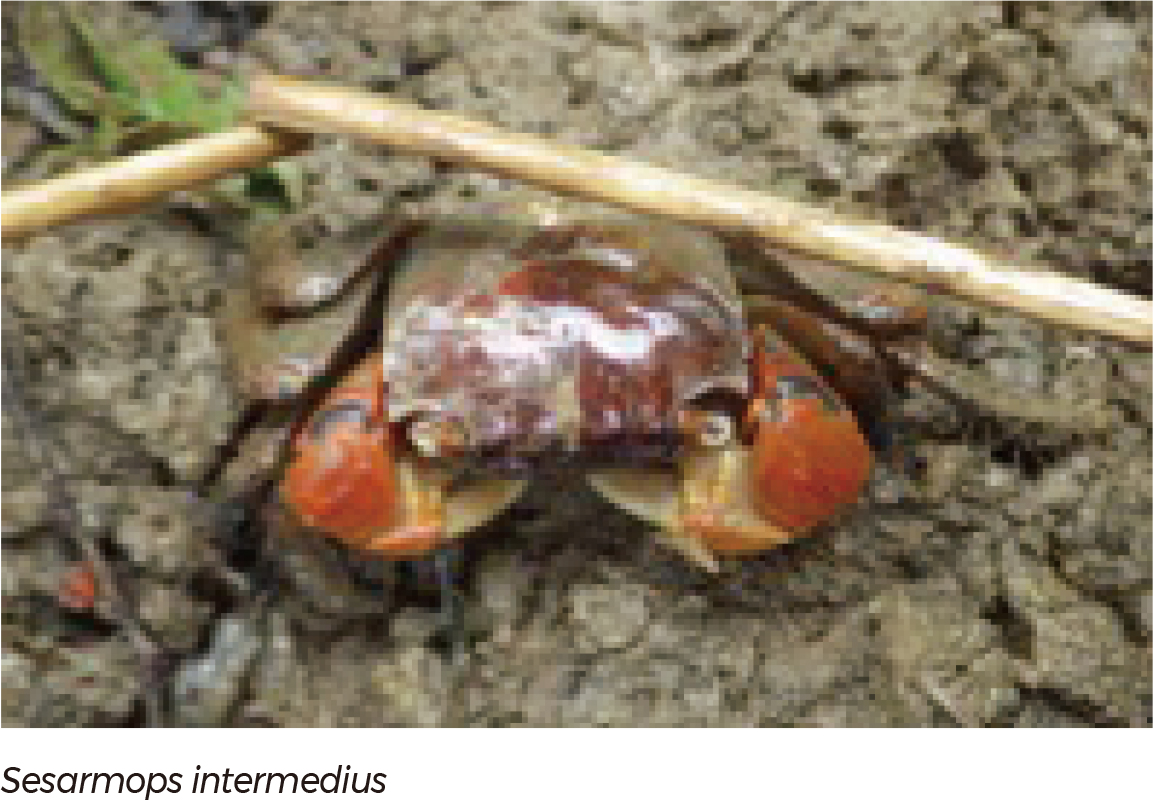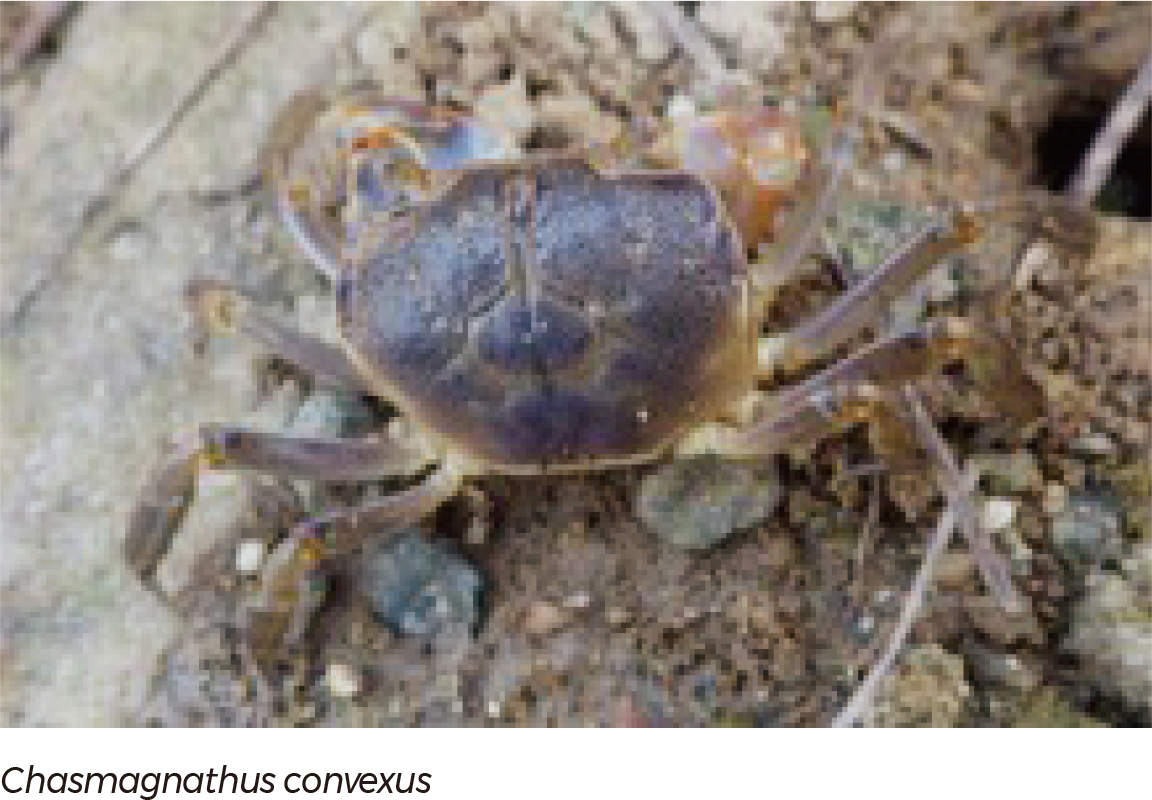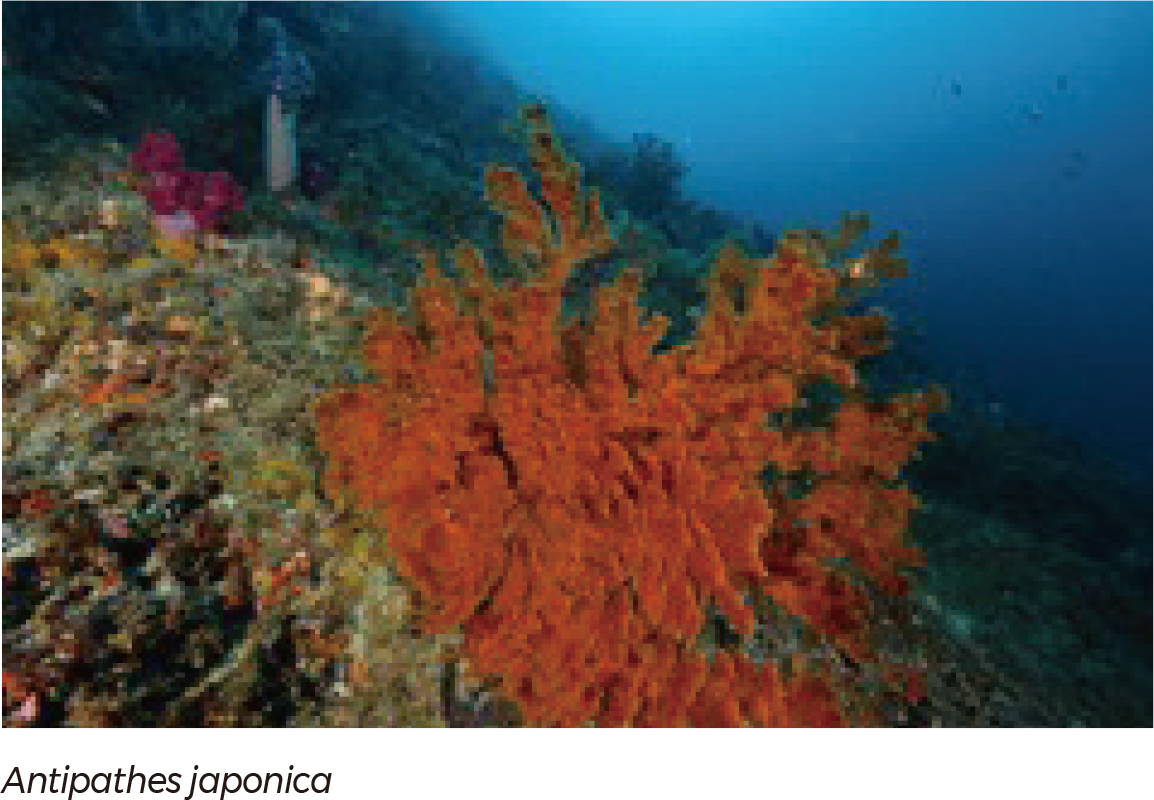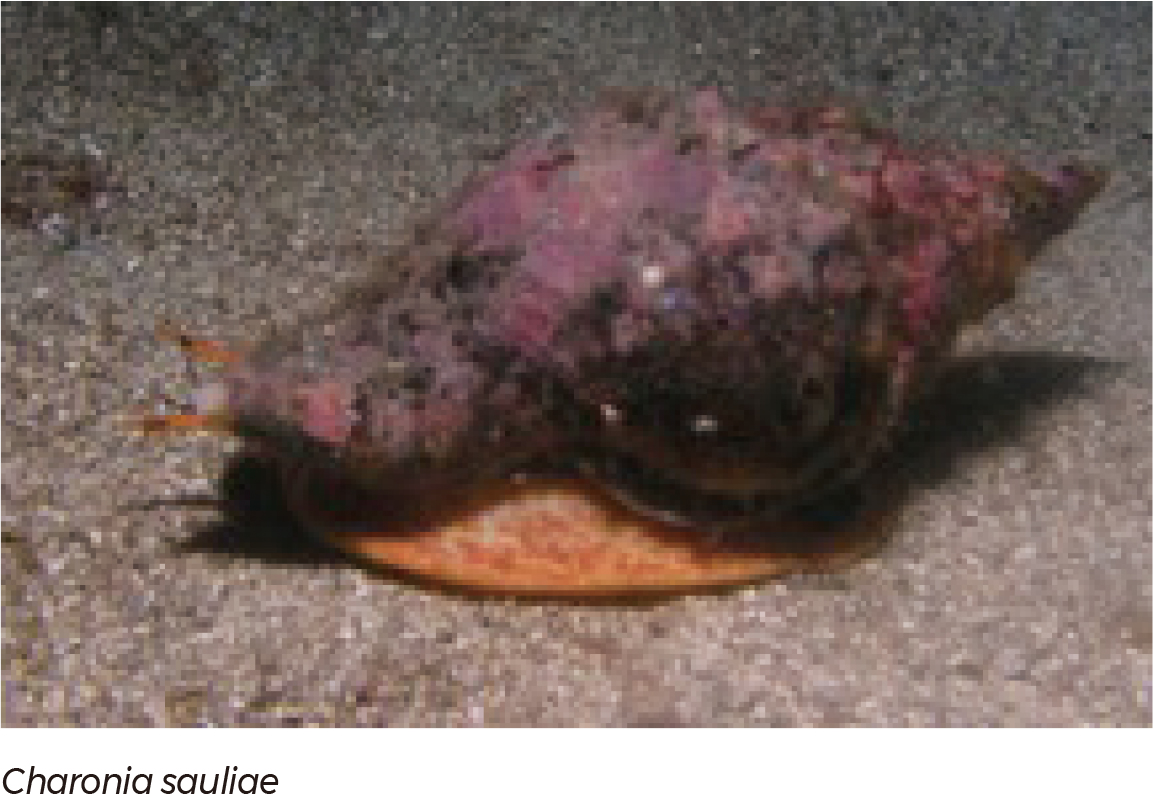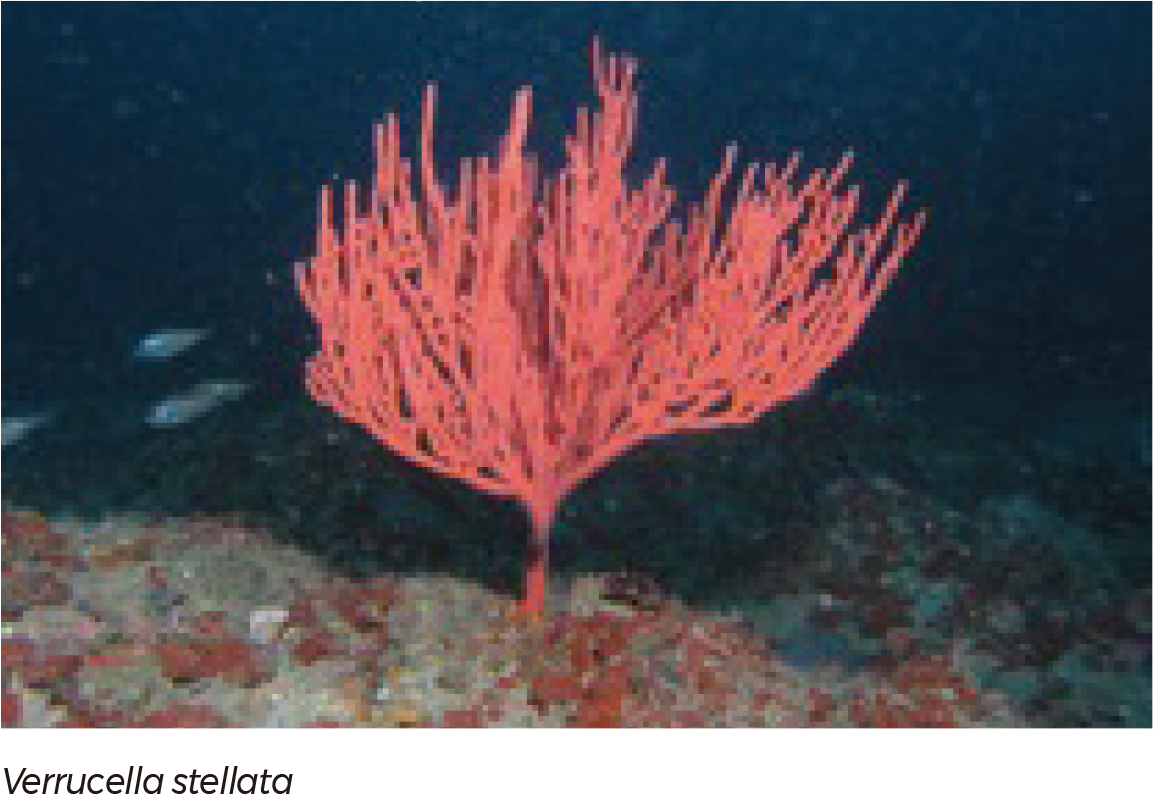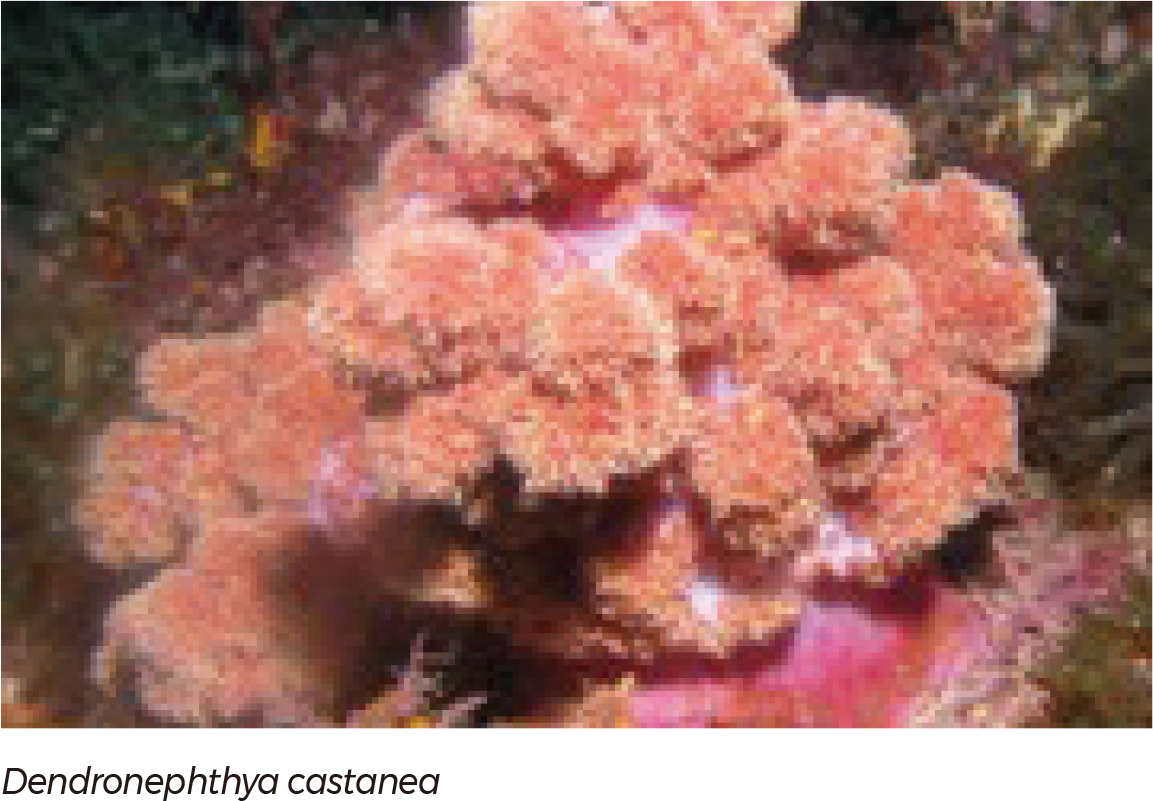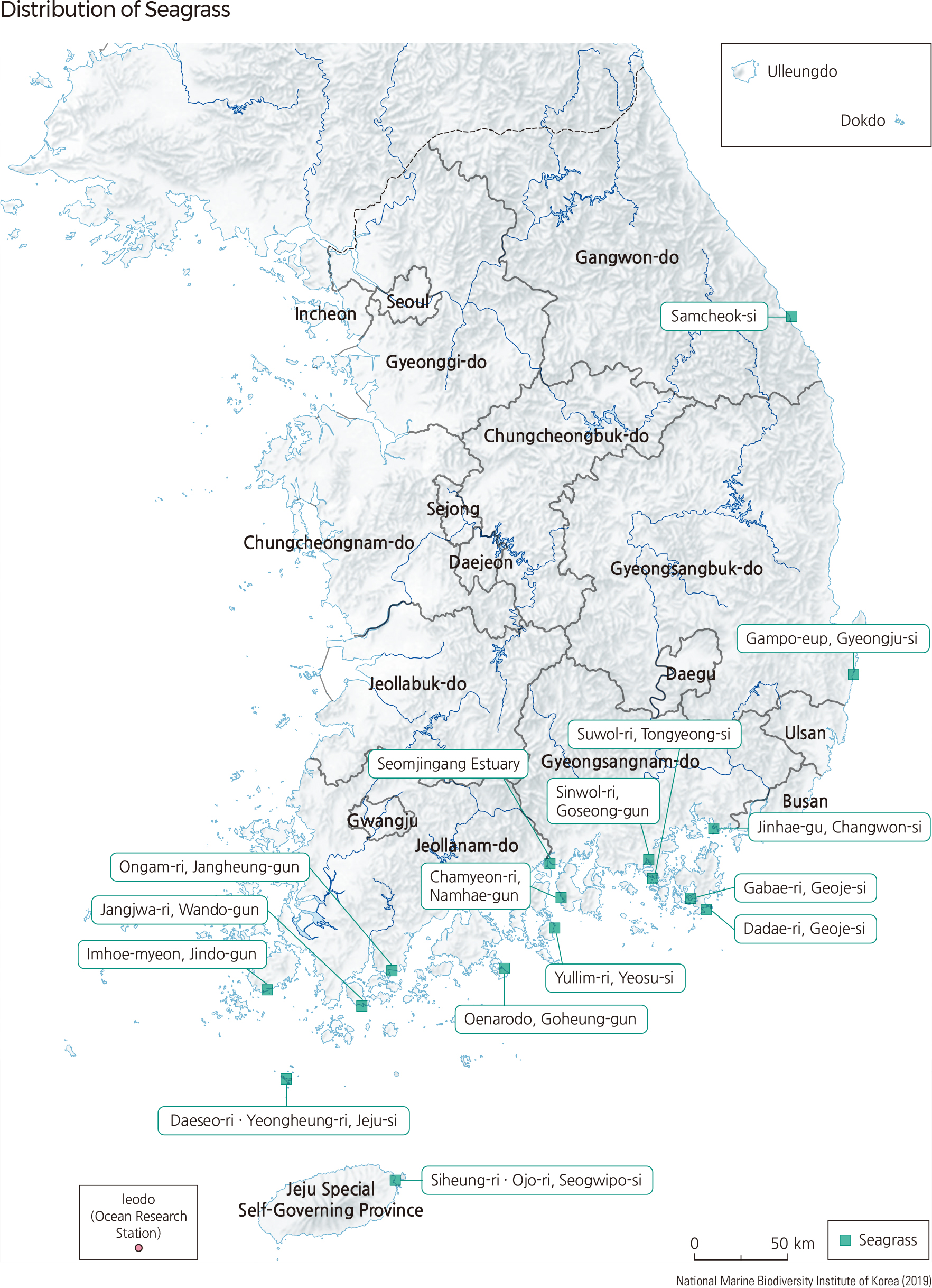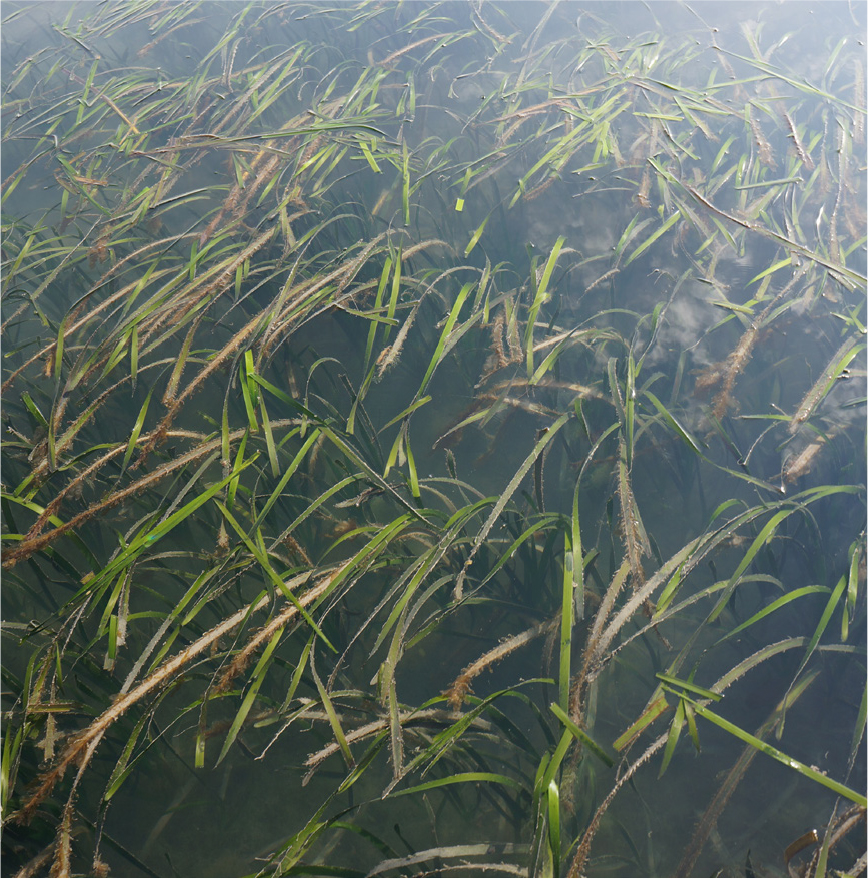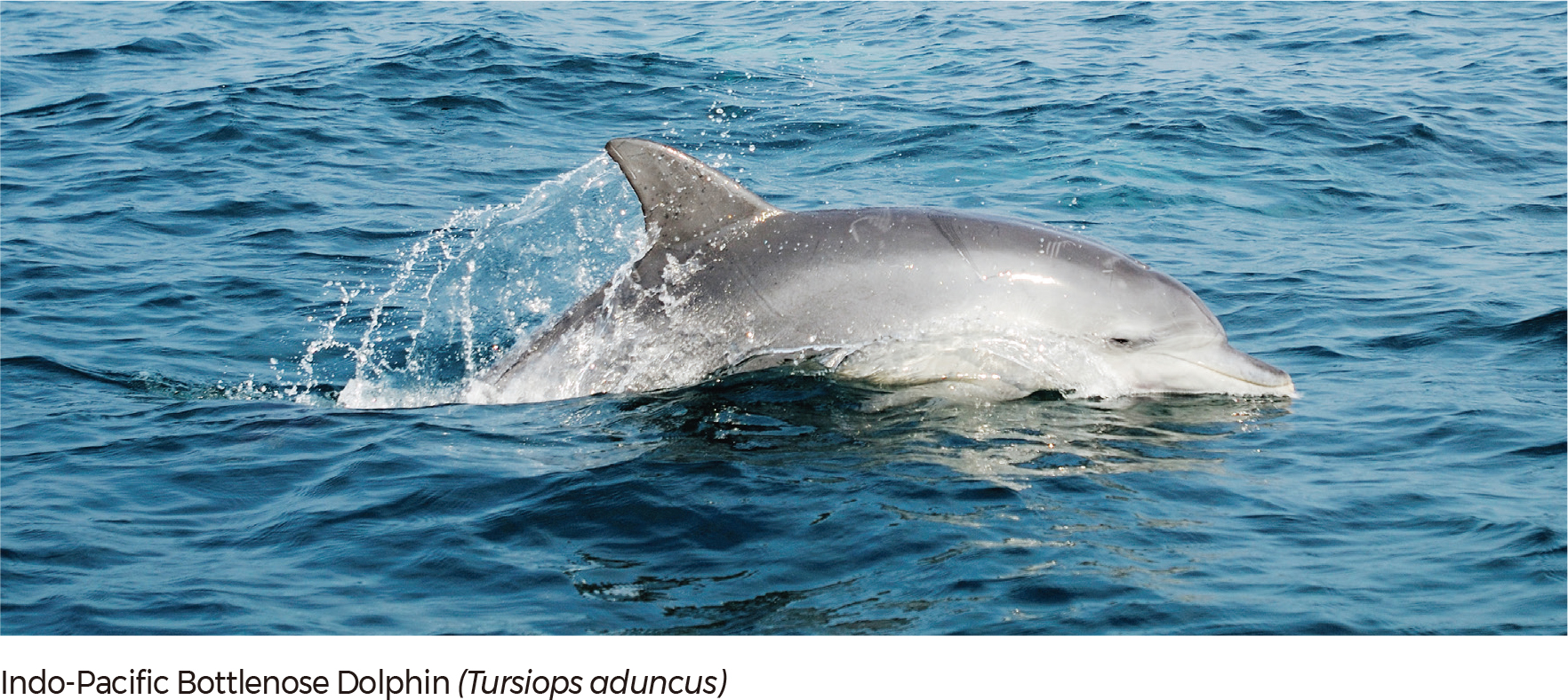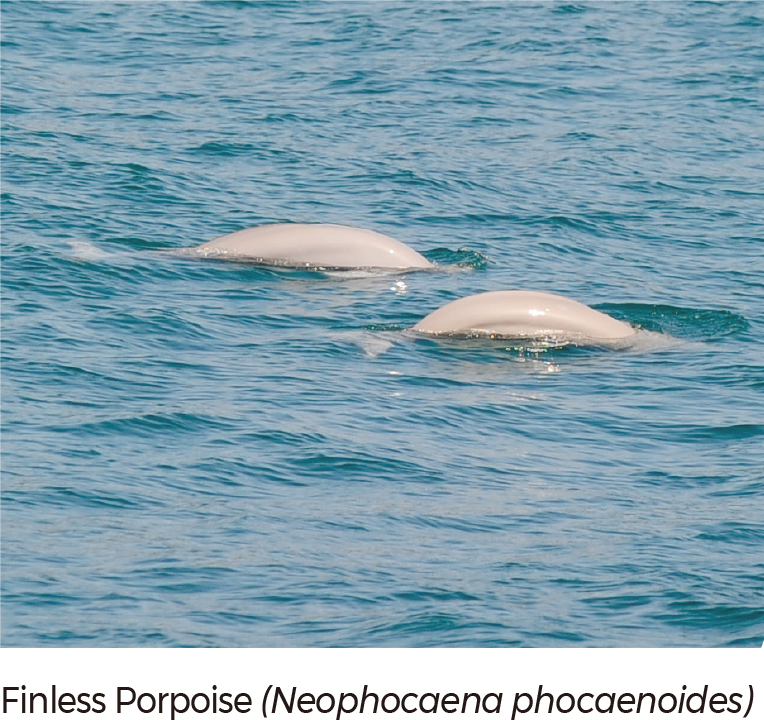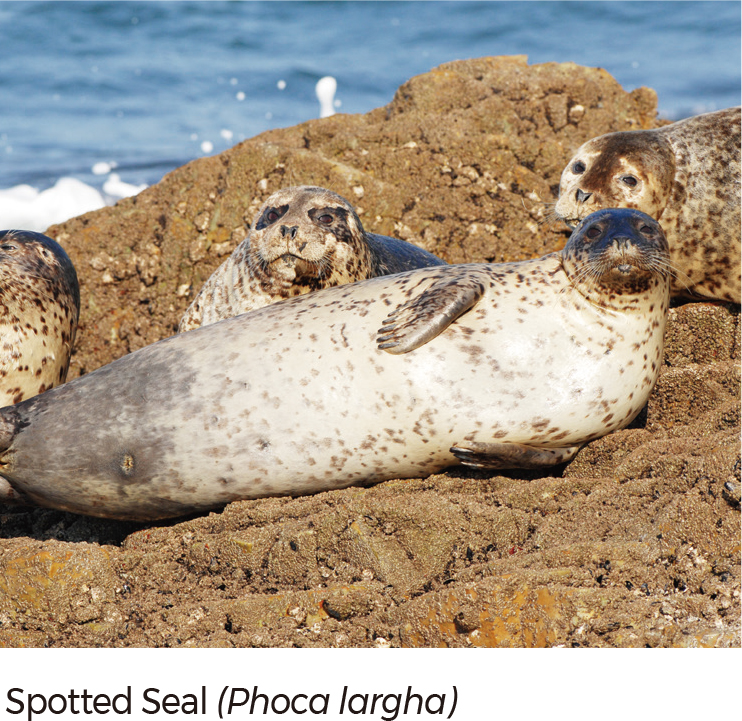English II 2020
9,534 marine life species inhabit the oceans of South Korea. Invertebrates constitute the highest portion, with a total of 4,989 species. There are 77 valuable species that are threatened or need to be protected and therefore have been designated as Endangered Marine Species.
Among the species of invertebrates, 20 have been designated as Endangered Marine Species, including 16 species of Actinozoa (Plumarella spinosa, Plumarella adhaerens, Euplexaura crassa, Verrucella stellata, Plexauroides reticulata, Plexauroides complexa, Dendronephthya suensoni, Dendronephthya castanea, Dendronephthya mollis, Dendronephthya putteri, Dendronephthya alba, Dendrophyllia cribrosa, Dendrophyllia ijimai, Tubastraea coccinea, Antipathes japonica, Dichopsammia granulosa), 2 species of mollusks (Scelidotoma vadososinuata hoonsooi, Charonia sauliae), and 2 species of enchinoderms (Ophiacantha linea, Nacospatangus alta). These species, which inhabit the subtidal zones or crawl on the ocean bottom, are extremely vulnerable to ocean development projects, trawling, marine pollution, and other human activities.
Among the Endangered Marine Species, 11 species of marine invertebrates (Sesarmops intermedius, Chasmagnathus convexus, Pseudohelice subquadrata, Ocypode stimpsoni, Scopimera bitympana, Perisesarma bidens, Uca lactea, Periserrula leucophryna, Synandwakia multitentaculat, dohelice subquadrata, Ellobium chinense, Clithon retropictus) inhabit intertidal regions. Excluding Perisesarma bidens and Uca lactea, 9 of these species bear high ecological value as endemic species to the coastal regions of Asia. However, they are in need of urgent protection because their habitats are directly affected by human activity.
The Ministry of Oceans and Fisheries conducted a comprehensive survey of national marine ecosystems over three years from 2017 to 2019. This survey investigated the tidal-flat ecosystem and revealed the ecology of benthic animals living in the coastal intertidal zone. This survey analyzed the biomass and density of representative and dominant species in major tidal flats nationwide, focusing on large benthic animals. The 2017 survey identified a total of 473 species of large benthic animals in the tidal flat. Of these, arthropods, annelids, and mollusks were dominant. The survey over three years revealed that isopods and amphipods of the phylum arthropod, polychaetes such as lugworms of the phylum annelida, and bivalvia such as shellfish of the phylum mollusca occupied more than 90% of the total organisms.
Seagrasses are the flowering plants that bear flowers and fruits and are distinguished from macroalgae because their roots, stems, and leaves are separated. In Korea, there are 9 species of seagrass in 4 genera. Among them, eelgrass is widely distributed over all coasts in Korea and is the dominant species distributed in most areas. Seagrass, called "the Forest of the Sea," is closely related to coastal fisheries by providing food, habitats, and spawning grounds for many marine organisms. Seagrass is sometimes referred to as blue carbon, which absorbs large amounts of carbon dioxide, which is the main cause of global warming through photosynthesis. However, seagrass was recently designated as a protected marine organism as its habitat gradually decreased due to coastal development from industrialization, land reclamation, and dredging.
Diverse marine mammals can be found worldwide, with 127 species recorded so far, including 89 cetaceans, 33 pinnipeds, 4 sirenians, 2 sea otters (Enhydra lutris), and 1 polar bear (Ursus maritimus). Thirty species of cetaceans and 3 species of pinnipeds are found in Korea. Species such as the North Atlantic right whale (Eubalaena glacialis), gray whale (Eschrichtius robustus), humpback whale (Megaptera novaeangliae), blue whale (Balaenoptera musculus), fin whale (Balaenoptera physalus), sei whale (Balaenoptera borealis), Bryde's whale (Balaenoptera edeni), sperm whale (Physeter microcephalus), Indo-Pacific bottlenose dolphin (Tursiops aduncus), spotted seal (Phoca largha), northern fur seal (Callorhinus ursinus), and Steller sea lion (Eumetopias jubatus) have been designated as Endangered Marine Species. Recently, the finless porpoise (Neophocaena phocaenoides), which is experiencing a drastic decrease in its numbers, has also been added to this list. The Indo-Pacific bottlenose dolphin, spotted seal, northern fur seal, and finless porpoise are frequently observed in domestic waters. |
